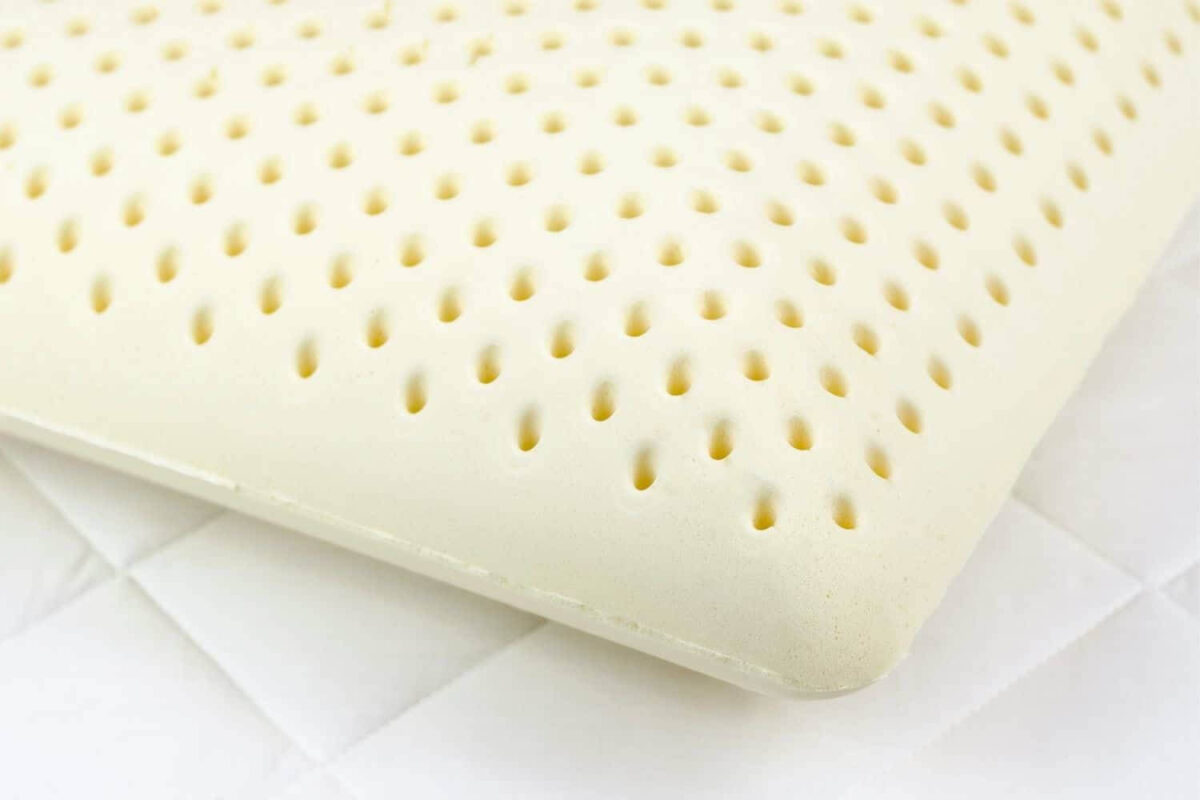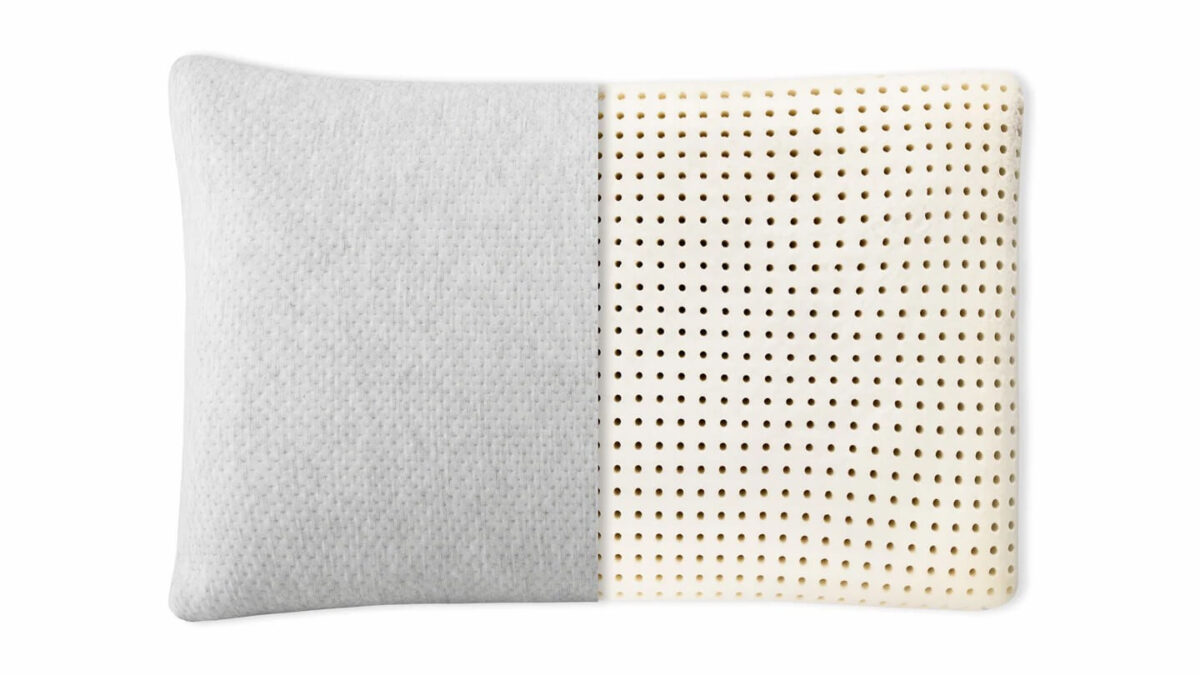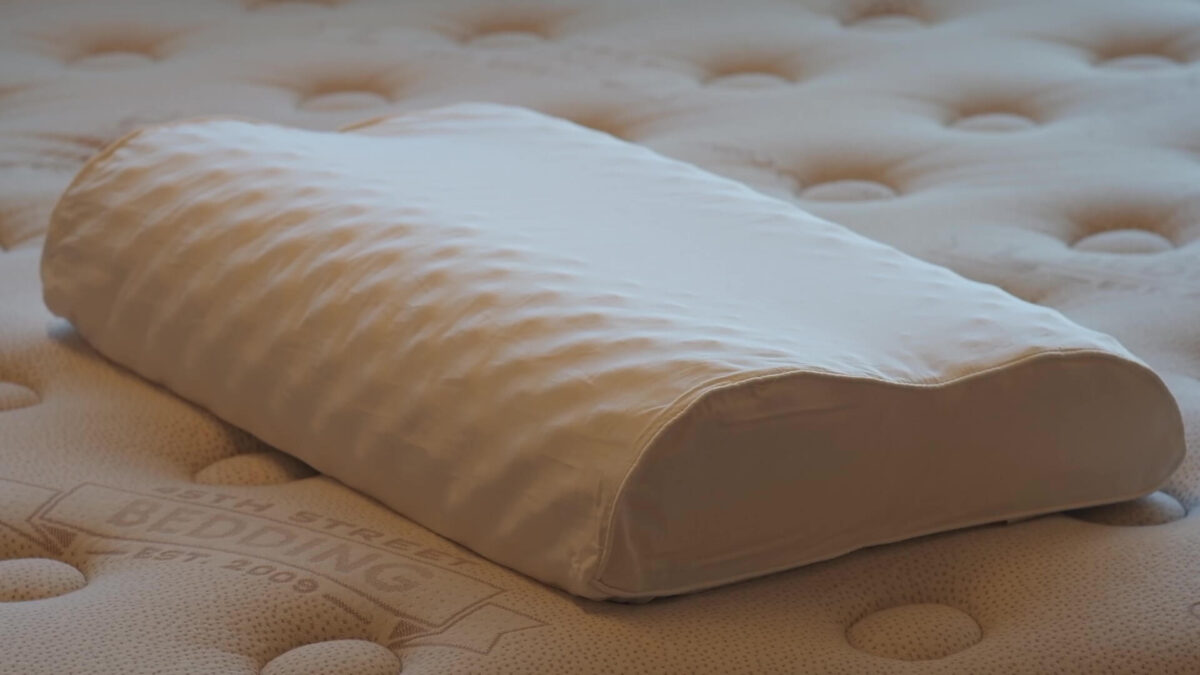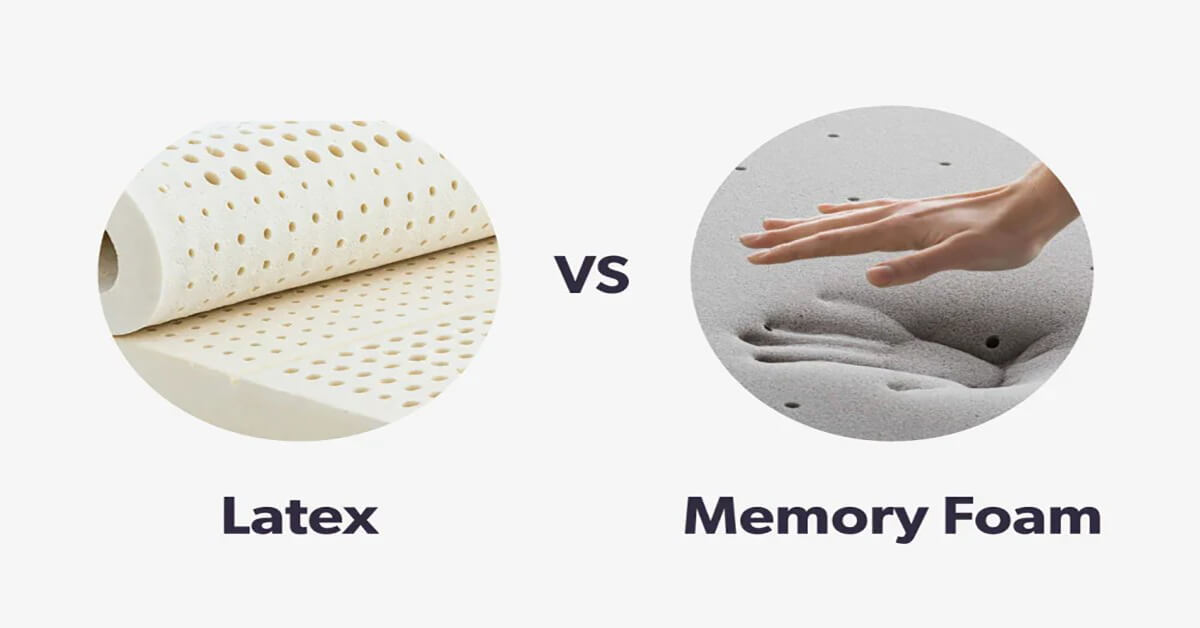Like most things related to your sleep, deciding what pillow to use is a very personal thing. One person may find a pillow soft and comfortable; another may, however, find it uncomfortable. However, natural latex pillows become a popular choice among many sleepers in the past couple of years. They feel soft but also supportive of the neck and spine, and they lend themselves well to a range of sleeping positions. A latex pillow is also very durable and long-lasting. In today’s guide, we’ll learn more about latex pillows.
1. What is a latex pillow?
As the name implies, latex pillows are pillows made from a form of soft and fluffy natural latex foam. Because it is hypoallergenic and free from any dangerous chemicals, it is an amazing choice for people who are health conscious and care about their sleep hygiene. The sap of the rubber tree is typically used to make natural latex pillows. This means that they are produced sustainably, so you can feel great about choosing one, among other reasons.
Synthetic latex is also available, but it is generally less durable than pure natural latex. Synthetic latex is man-made and is usually inferior to natural rubber in many ways. Latex pillows made with natural latex are more expensive than pillows made with synthetic latex, but they are also of higher quality. Synthetic latex can also have an unpleasant smell. When buying a latex pillow, if you are highly sensitive to the scent of a product, get one made of natural latex, which is free of odour and flame retardants.
Two different ways are used to manufacture latex pillows. The Dunlop method is the first which requires the latex to be whipped by a centrifuge and then poured into the mould. This is the preferred way of manufacturing latex pillows. Another method is the Talalay method, which involves pouring latex in layers. Dunlop latex tends to sink during the production process, while natural Talalay latex has a more consistent structure. We recommend Dunlop pillows since their tops are softer, and their bottoms are denser and more supportive which is excellent for achieving both pressure relief and support.

2. 9 benefits to sleeping on a latex pillow
Sleeping with a natural latex pillow has several advantages.
1) Unparalleled Support
Nothing is worse for your neck than sleeping on a pillow without adequate support. It might be hard to believe, but your pillow typically accounts for around 20 per cent of your overall sleeping surface. All three areas, the head, neck, and shoulders, should be supported as best as possible by a pillow. Your pillow should support you the same way that your mattress supports you so that you can sleep comfortably.
A latex foam pillow will conform to your head, neck, and shoulders for pressure relief while also providing optimal support so that you can sleep comfortably. In addition, latex offers extra support over memory foam, fibre, or even down, which can help align your spine for a comfortable night’s sleep. As well as being durable, latex also lasts for many years without changing its shape. Plus, it feels soft and provides comfortable support for sleeping. Some latex pillows like our Dream Pillow are made from individual pieces of latex foam that are removable or added to give you optimum comfort and support.
2) Reduces noise
Latex foam is probably the quietest pillow material in the world. While you’re sleeping, you won’t hear those frustrating squeaking and rustling sounds most pillows make when you shift at night. Neither will anyone else in the room! The level of support latex pillows provide may also help keep airways open and reduce snoring — this means it even eases nose noises too!
3) Lasts longer than other options
Latex is the most durable type of pillow on the market. Also, latex pillows have hypoallergenic properties that can minimize issues with dust, bacteria, or mould. You don’t have to replace it with a latex pillow as often as you would with a traditional pillow. With its resilient nature, latex foam holds its shape longer than all other pillow types.
So as long as your latex pillow continues to provide a consistent and appropriate amount of support to your head, neck and shoulders, you won’t need to worry about its shape deteriorating.
You’ll find that latex pillows are typically more expensive than their synthetic counterparts — but think of a latex pillow as an investment. You’ll enjoy its use for many years after purchase.

4) Contains no allergens
People with allergies are often recommended natural latex pillows to promote good sleep. Many pillows contain fillers that trap dust and allergens, making it difficult for allergy sufferers to sleep with them. Most pillows need to be replaced every two years to keep allergens at bay. Latex pillows don’t have this problem.
You don’t have to worry about mould, fungi, bacteria, or mildew in your natural latex pillows because they’re hypoallergenic, antibacterial, and antimicrobial. Dust mites do not thrive on latex pillows, making them an excellent choice if you suffer from respiratory issues. If you have sensitive skin, a latex pillow may be the right choice for you — as long as it’s natural latex rather than synthetic latex.
5) Relieves pain and pressure
A latex pillow’s ideal soft support can reduce the pain caused by sleeping on an unsupportive pillow. The cushioning provided by latex pillows is superior to almost any other pillow fill on the market, ensuring proper spinal alignment and pressure relief for a good night’s sleep.
6) Maintains ideal sleeping temperature
Many people have difficulty sleeping at night because they are too hot and struggle to remain comfortable. Latex pillows keep sleepers cool throughout the night due to their cellular structure, which offers maximum breathability. The latex pillow won’t change its temperature regardless of how hot or cold the room is. This helps to ensure a consistent, comfortable, and constant temperature during the night so that you sleep comfortably. If you prefer a cool pillow, you’ll love natural latex pillows.

3. Latex Foam vs. Memory Foam Pillows
Both memory foam and latex pillows are very popular now for people looking to upgrade their sleep. So what are the main differences between them?
The first thing to know about memory foam is that it is 100 per cent synthetic — it is made from polyurethane viscoelastic. The memory foam initially feels hard, but your natural body heat causes it to soften and conform to your particular shape. Your head can leave an imprint on your memory foam pillow for a while after using it, so don’t expect it to bounce back immediately.
Memory foam pillows are marketed as distributing pressure and weight evenly. Memory foam’s most considerable downside is that it retains heat, allows for little airflow, and provides little support when it becomes too hot. This lack of support can make you feel stuck in the pillow and typically sets in after sleeping on it for around 30 minutes. Many sleepers have trouble with memory foam’s tendency to sleep hot. Compared to latex pillows, memory foam pillows tend to break down more rapidly and are unlikely to last as long.
Pillows made of latex differ significantly from other pillows. The latex is obtained from the sap of a rubber tree known as the Hevea brasiliensis. During manufacturing, the latex produces thousands of tiny air bubbles, giving it the soft, light, and bouncy texture that makes natural latex foam so popular. As a result of its springiness, latex feels different from memory foam and bounces back quickly after sleeping on it. No heat is required for the latex foam, and it is not rigid.
The inherent hypoallergenic properties of natural latex make it a popular alternative to memory foam because it is free of allergens and chemicals. The material is more breathable and can regulate body temperature more effectively for a good night’s sleep.
You can expect a wide range of prices between memory foam and latex pillows. The costs for latex pillows are generally more consistent than those of memory foam pillows, with memory foam pillows coming in every price range. Memory foam pillows are usually less expensive, but it has a shorter lifespan than latex pillow.
Memory foam and latex pillows look great on your bed; they regain their shape after sleeping, so you don’t have to fluff them up when you make your bed. Scientific studies have shown people prefer them over traditional pillows made from feathers or down because they offer better comfort and hygiene. However, a latex pillow is more likely to be breathable, comfortable, and durable than a memory foam pillow.

4. Latex pillow care
Care for latex pillows can be tricky — you can’t just throw them in your washing machine, or they’ll warp. This is also true if you soak, wring, or twist them. Rather than washing your pillow in the machine, you can spot clean areas that need cleaning with a damp cloth and hot, mild soapy water. Many pillows also come with a removable cover that can be machine-washed.
It would be best if you never left a latex pillow outside in the sun. Latex may become hard and brittle if exposed to direct sunlight. If you are in doubt, please follow the specific care instructions included with your latex pillow.
5. Conclusion
Sleep plays a significant role in determining our health and well-being, as a third of our lives is spent this way. Choosing a latex pillow, with its wide range of benefits and health benefits, helps ensure you get the right amount of restorative sleep. With a breathable latex pillow, we bet you’ll be in dreamland before you can even say, “Sweet dreams.”





Leave A Comment